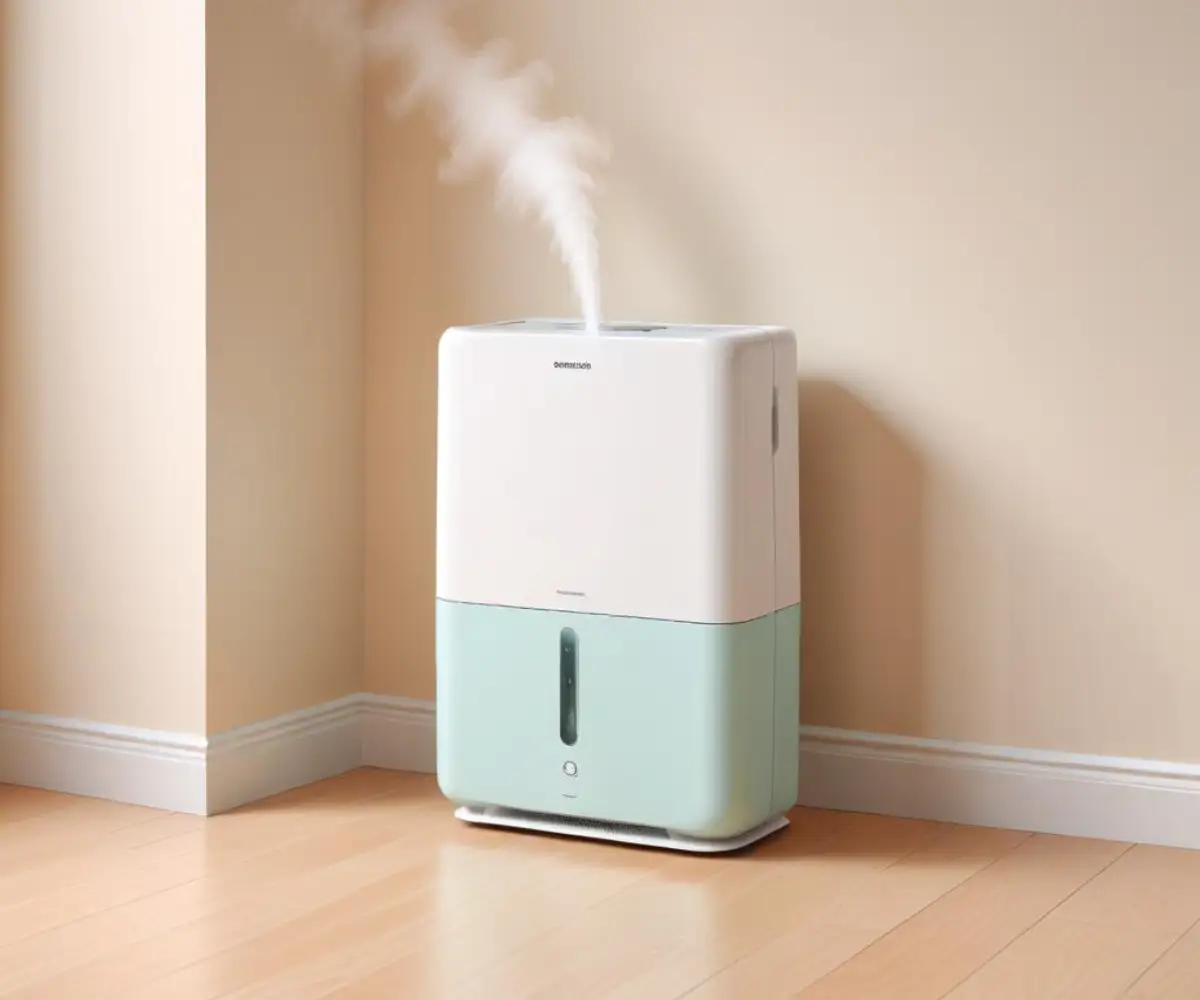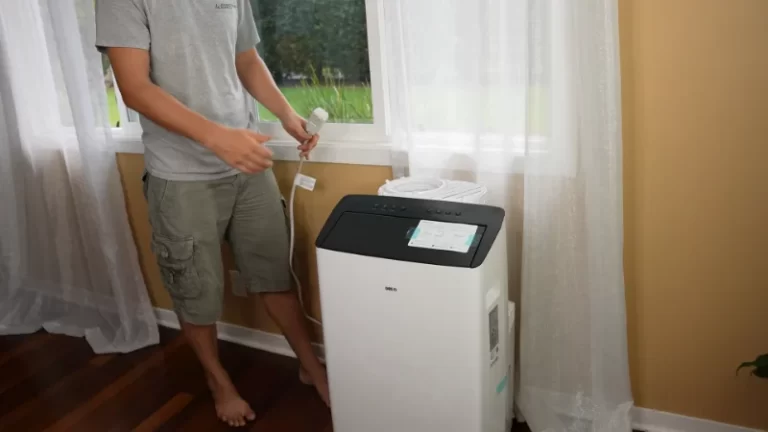Tired of Filling Your Humidifier? There’s a Better Way
That dry, scratchy feeling in your throat. The startling zap of static electricity every time you touch a doorknob. These are the tell-tale signs of winter air, stripped of its moisture by your heating system. For years, the solution has been a portable humidifier, but this fix introduces its own relentless chore: the constant cycle of refilling a heavy, sloshing water tank every single day.
What if you could achieve perfect indoor humidity without the daily hassle? Imagine a device that provides consistent, healthy moisture to your home automatically. This isn’t a futuristic dream; it’s the reality of a stand-alone humidifier with a water line, a game-changing appliance for any homeowner tired of the refill routine.
You'll Learn About
What Exactly Is a Stand-Alone Humidifier with a Water Line?
Think of it as the smarter, more independent sibling of your typical portable unit. A stand-alone humidifier with a water line is a self-contained appliance that connects directly to your home’s plumbing. Instead of a manually filled tank, it uses a small hose to draw water as needed, ensuring uninterrupted operation and a consistently comfortable environment.
These units are distinct from furnace humidifiers, which are integrated directly into your HVAC system’s ductwork. A stand-alone model offers similar “set it and forget it” convenience but provides more flexibility in placement and doesn’t require modifying your furnace setup. A small float valve or an electronic sensor inside the humidifier monitors the water level, automatically opening to let more water in when it gets low and shutting off once it’s full.
The Unseen Dangers of Inconsistent Humidity
The problem with traditional humidifiers isn’t just the inconvenience; it’s the inconsistent humidity levels they create. Forgetting to fill the tank for a day or two causes the air to become bone-dry again, creating a yo-yo effect on your home’s environment. This fluctuation is more than just uncomfortable—it can be actively harmful.
Dry air allows viruses to thrive and travel more easily, contributes to dry sinuses and bloody noses, and can aggravate allergies and asthma. It also pulls moisture from everything in your house, causing expensive wood floors to shrink and gap, furniture to crack, and paint to chip. In extreme cases, severe dryness can even affect the structural integrity of your home, contributing to issues where you might notice drywall moves when pushed due to wood framing contracting.
Why Your Old Humidifier Is Failing You: The Refill-Rinse-Repeat Cycle
The core failure of portable humidifiers lies in their reliance on manual labor. The daily task of unplugging the unit, carrying a heavy tank to the sink, filling it without spilling, and hauling it back is a burden many people eventually abandon. This leads to the humidifier sitting unused in a corner, while the dry air problem persists.
Furthermore, the stagnant water in a portable humidifier’s tank is a perfect breeding ground for mold and bacteria. This requires diligent weekly cleaning, another chore that’s easy to forget. Neglecting this can lead to musty odors and the dispersal of harmful microorganisms into the very air you’re trying to improve, which can create other household odor mysteries, sometimes as alarming as when drywall smells like urine due to hidden moisture issues.
The Ultimate Solution: Unpacking the Benefits of a Direct Water Line
Switching to a stand-alone humidifier with a direct water connection eliminates these problems entirely. The benefits extend far beyond simple convenience, impacting your health, your home’s condition, and even your wallet.
Set-It-and-Forget-It Convenience
This is the most celebrated advantage. Once installed, the humidifier manages its own water supply. It provides continuous, hassle-free humidification 24/7, maintaining the perfect moisture level without you ever lifting a finger. No more daily refills, no more spills, and no more forgotten tanks.
Unwavering Humidity Control for Health and Home
Because the unit never runs dry, it can maintain a precise and stable humidity level, typically between the expert-recommended 30% and 50%. This consistency helps soothe respiratory passages, reduce the viability of airborne viruses, and protect your home’s wooden elements from damage. It creates a stable environment that benefits everything and everyone under your roof.
Cleaner Air, Healthier Breathing
Many humidifiers with a direct water line are evaporative models. This style is less likely to disperse fine white mineral dust into the air, a common issue with ultrasonic units using hard tap water. The constant supply of fresh water also means there’s no stagnant reservoir for bacteria and mold to grow in, leading to cleaner, healthier moisture.

Choosing Your Perfect No-Refill Humidifier: A Buyer’s Guide
When you’re ready to upgrade, knowing what to look for is key. The right unit will serve your home reliably for years. Consider these factors before making a purchase.
Understanding the Types: Evaporative vs. Ultrasonic
Most stand-alone models with water lines are evaporative. They use a fan to blow air through a moistened wick or filter, a process that naturally adds moisture to the air without releasing mineral dust. Ultrasonic models use high-frequency vibrations to create a fine mist; while quieter, they can create white dust if you have hard water, unless used with a demineralization filter.
Sizing and Capacity: How Much Power Do You Need?
Humidifier capacity is measured in gallons per day (GPD). The size you need depends on your home’s square footage and how well-sealed it is. A larger, draftier home will require a unit with a higher GPD rating to maintain adequate humidity levels.
Key Features to Demand
Look for models with a built-in, adjustable humidistat that automatically turns the unit on and off to maintain your desired humidity level. Other critical features include filter replacement indicators and, most importantly, a reliable automatic water shutoff mechanism to prevent any possibility of leaks.
| Feature | Traditional Portable Humidifier | Stand-Alone with Water Line | Furnace/HVAC Humidifier |
|---|---|---|---|
| Refill Frequency | Daily or more | Never (Automatic) | Never (Automatic) |
| Coverage Area | Single Room | Large Area to Whole Home | Whole Home |
| Installation | Plug and play | Requires plumbing connection (DIY or Pro) | Requires HVAC modification (Pro recommended) |
| Maintenance | Frequent cleaning and descaling | Annual pad/filter change, occasional cleaning | Annual pad/filter change |
| Placement | Flexible (within cord reach) | Less flexible (near water line) | Fixed to furnace |
Installation Insights: What to Expect
Connecting a humidifier to a water line is a straightforward project for those with basic DIY skills, but calling a plumber is always a safe bet. The process typically involves choosing a location near both a power outlet and a water source, such as a laundry room sink or an ice maker line.
The connection is often made using a saddle valve, which clamps onto a pipe and pierces it to create a small access point for the humidifier’s 1/4-inch tubing. It’s crucial to ensure all connections are secure to prevent leaks. Just as with other major appliances, proper installation is key to avoiding electrical issues; a faulty setup can sometimes cause problems like flickering lights, an issue people also encounter when large appliances start up, making them wonder why their lights flicker when the dehumidifier turns on.
The Maintenance You Can’t Ignore (Even If It Fills Itself)
A common misconception is that an automatic-filling humidifier is a no-maintenance appliance. While it eliminates the daily chore of refilling, it does not eliminate the need for periodic upkeep. This is the single most important secret to long-term performance and healthy air quality.
The water in your home contains minerals that get left behind during the evaporation process. Over time, these minerals build up on the humidifier’s wick filter and internal components. This buildup, known as scale, can restrict airflow, reduce efficiency, and become a breeding ground for bacteria if left unchecked.
To keep your unit running perfectly, you must commit to a simple annual maintenance schedule. This involves replacing the evaporative wick filter (or pad) at the beginning of each heating season. Additionally, it’s wise to inspect and clean the water reservoir and float valve to remove any scale deposits, ensuring the mechanism operates smoothly and cleanly.
Potential Downsides and How to Mitigate Them
While the benefits are substantial, there are a few potential drawbacks to consider. The primary concern is the risk of a water leak. This risk can be virtually eliminated by using high-quality components, ensuring connections are tight, and considering a professional installation for peace of mind. Placing a water leak detector near the unit is an inexpensive way to add another layer of protection.
The upfront cost is also higher than that of a simple portable unit. However, when viewed as a long-term investment in your health, comfort, and the preservation of your home, the value becomes clear. The convenience and consistent performance far outweigh the initial expense over the life of the appliance.
Is a Stand-Alone Humidifier with a Water Line Your Home’s Next Best Upgrade?
If you are tired of the daily refill grind and want a permanent, effective solution for dry indoor air, the answer is a resounding yes. A stand-alone humidifier with a direct water line offers the perfect blend of the power of a whole-house system with the simplicity of a stand-alone appliance.
By providing consistent, clean moisture without any daily effort, this appliance transforms your home into a more comfortable, healthier, and safer environment. It’s an upgrade that protects your property, supports your well-being, and gives you back valuable time and energy, finally putting an end to the tyranny of the empty water tank.

